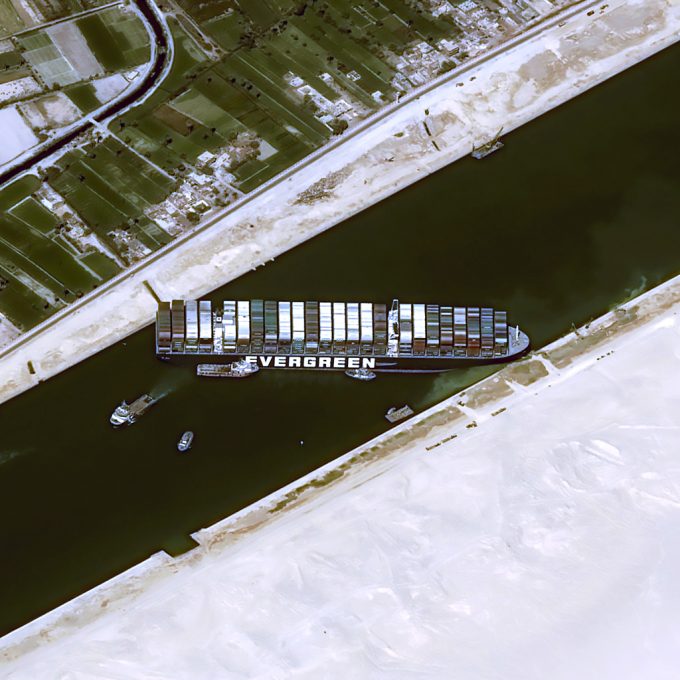Damaged bulker Ruby can finally unload volatile cargo, at UK's Gt Yarmouth port
Malta-flagged MV Ruby, the crippled bulk carrier with 20,000 tonnes of Russian ammonium nitrate aboard, has ...

As the investigation into the grounding of the Ever Given in the Suez Canal begins, the vessel’s Japanese owner, Shoe Kisen, this morning declared General Average.
And a customer circular from Evergreen, seen by The Loadstar, confirms that Shoe Kisen this morning appointed Richard Hogg Lindley as adjustor.
For the vessel, now at anchor at the Bitter Lakes area undergoing technical inspections, a possible date of departure to ports of discharge has yet to be set.
And while there is no reported damage ...
Semiconductors could compensate for air freight's lost ecommerce traffic
'It’s healthy competition' Maersk tells forwarders bidding for same business
Transpacific sees first major MSC blanks as rates fall and volumes falter
'Weakened' Maersk paying a heavy price for its lack of fleet growth
US shippers slam USTR port fee plan – 'an apocalypse for trade'
Opposition builds for final hearing on US plan to tax Chinese box ship calls
Despite sourcing shifts, 'don't write-off China', says CMA CGM CCO
Calling all shippers!
Please give us a minute of your time to answer the following questions:

Comment on this article
Mike Seibert
April 02, 2021 at 5:23 pmTerrific update on this incident.
Alex Lennane
April 07, 2021 at 10:49 amFrom Ingvar Bergman:
Opine use of G/A wrong. There was no ‘salvage’ and no ‘act of God’ as I could understand. Both vessel and cargo safe, I feel sorry for the cargo owners (CO) who will suffer from contribution to G/A and delay in delivery and those inadequately insured with expected paperwork. I opine this is not a G/A case. I agree with one writer to issue a separate claim for compensation for the tugs The vessel and cargo were in a sheltered area and there was no risk of situation to deteriorate
LEAVE THE COs AND CONCENTRATE YOUR EFFORTS TO FACTFINDING OF THE ACTIONS (or lack of) ON THE BRIDGE. !!
Technical failure ? Bow thrusters ? Radar that did not work properly or set on wrong scale?
.
Present G/A form is dated (I presume) some 100 years ago. There were few CO with limited number of Bs/l onboard at that time Size of vessels has taken a dramatic development and so have the values of them,